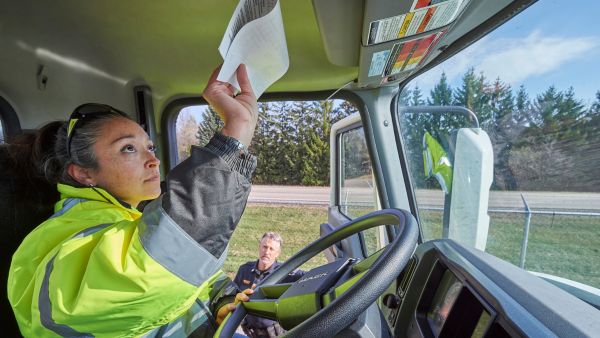How Training Can Keep You Out of the Courtroom
Jill Schultz, Sr. Editor - Transportation Safety
December 22, 2021

According to research conducted by the American Transportation Research Institute (ATRI), between 2014 and 2019 there were nearly 300 cases against trucking fleets that resulted in awards of $1 million or more.
So how does a motor carrier try to prevent accidents and, in turn, these staggering judgements?
Solid company policies addressing safe driving practices, combined with consistent and meaningful driver training that backs up these policies, can assist in reducing accidents and their costs, including those related to potential litigation.
A meaningful driver training program includes new driver, experienced, and corrective action training.
New driver training
New driver training applies to any driver who is new to your company. This driver could be fresh out of driving school or have a few years of experience.
The goal of this training is to address your company’s expectations, processes, and procedures before the driver hits the road for the first time for your company. It can help in undoing improper or bad driving technique or resolve misunderstandings around compliance issues.
Topics you should address include hours of service, fatigue prevention, vehicle inspection, and defensive driving, including visual search, speed and space management, and adverse driving conditions.
Experienced driver training
An experienced driver is an individual who has been with your company and operating your vehicles for at least one year.
Training for experienced drivers should include updates on company policy, regulatory changes, and operational issues that come up on a regular basis.
For example, if you find that there is an increase in claims, incidents, and/or accidents related to backing into a dock or parking space, review safe backing technique.
Topics that drivers should review on a regular basis include hours of service and vehicle inspections.
Corrective action training (CAT)
Corrective action training (CAT), sometimes referred to as remedial training, is conducted with a driver in response to an accident, incident, violation, or complaint.
CAT should focus specifically on the individual driver’s problem or issue. For example, if a driver was involved in a fixed object accident involving turning, a brief and targeted session on cornering should be conducted.
To successfully implement CAT, you need to have an active driver monitoring program and link it to your company’s disciplinary policy.
Learn how J. J. Keller® Safe & Smart Driver Training can help reduce your risk — Call 833.982.1236 or fill out the lead form below and representative will be in touch with you soon.
I'd like to learn more!
Talk with a Compliance Specialist today at 833-982-1236 or fill out the form below and we'll be in touch with you.
Thank You!
Thank you for your interest! A Compliance Specialist will contact you soon regarding your request or you can contact us at 833-982-1236
We're sorry, there was an issue in submitting the form.
Please refresh the page and resubmit your information.